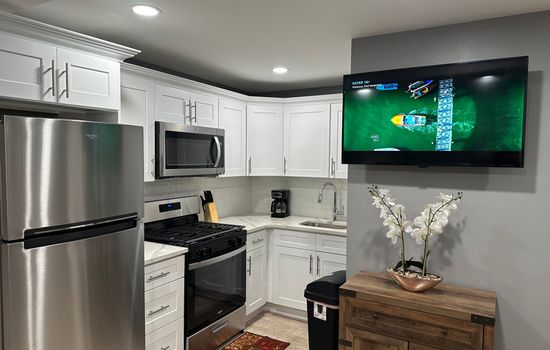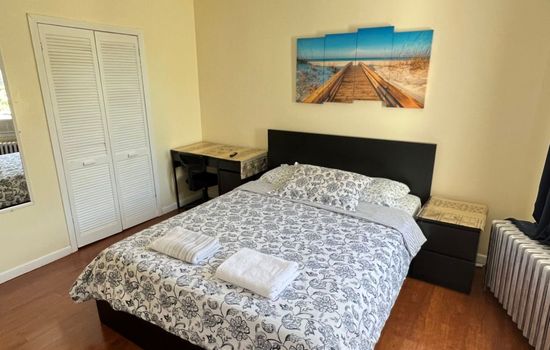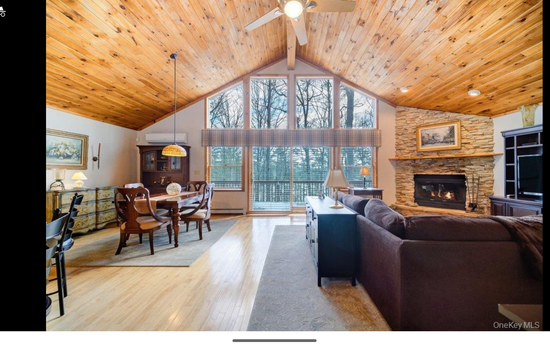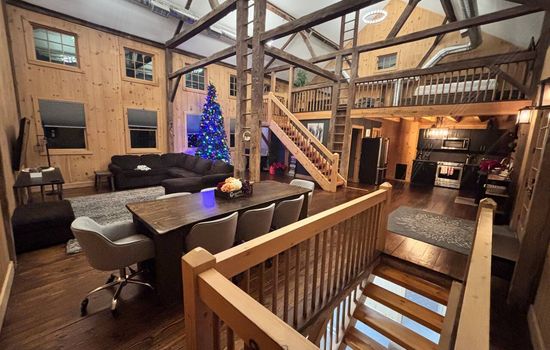The Laboratory Complex Visitor Center is open Thursday to Saturday from 11:00 AM to 3:30 PM, and Sunday from 11:00 AM to 3:30 PM. It is closed Monday to Wednesday.
The entrance fee at Thomas Edison National Historical Park is $15 per adult 16 and older; children 15 and under are free. You can also purchase an annual pass for $45, which includes entry for the cardholder and three adult guests for 12 months. Payments are accepted by credit or debit card only.
From Newark, take I-280 West to Exit 10, turn right onto Northfield Avenue, then left onto Main Street, and arrive at the historic heart of innovation.
Parking is available in a free lot across the street from the laboratory complex. Street parking is also an option. No specific accommodations for RVs or overnight parking; motorcycles can use the same parking areas. No parking fees.
Accessibility & permits
Emergency
- Cell service availability:Full
Information not accurate?
Help us improve by making a suggestion.
Thomas Edison National Historical Park, situated in West Orange, New Jersey, is a captivating destination that transports visitors back in time to the era of America’s most prolific inventor. This historic site preserves Thomas Edison’s home, Glenmont, and his groundbreaking laboratory complex, offering a glimpse into the life and work of a genius who revolutionized the world.
The laboratory, designed by architect Henry Hudson Holly in 1887, is a marvel of Late Victorian and Queen Anne architecture. Here, within 14 historic structures, Edison and his team developed iconic inventions such as the motion picture camera, improved phonographs, sound recordings, and the nickel-iron alkaline electric storage battery. The main building houses a research library, experimental rooms, and machine shops, while separate buildings are dedicated to physics, chemistry, and metallurgy.
Just a half-mile away, the 29-room Glenmont mansion stands on 15 beautifully landscaped acres, complete with a barn and greenhouse. The mansion boasts an impressive arts collection, including major works of art, Edison’s china collection, and rare family memorabilia.
The park also features the Edison Archives, one of the largest collections in the National Park Service, with 5 million documents, 48,000 sound recordings, and 60,000 photos. Visitors can explore the replica of the world’s first motion-picture studio, the Black Maria, and immerse themselves in the era of innovation and discovery.
While the park does not have the typical natural attractions of a lake-centered park, it offers a unique blend of historical significance and educational experiences. Special events include guided tours and lectures that bring the legacy of Thomas Edison to life. For those interested in deeper engagement, the Friends of Edison nonprofit offers additional resources and support for the preservation and restoration of the site.
In the surrounding area, visitors can enjoy the charming town of West Orange, with its local shops and restaurants, or explore nearby artisan towns that reflect the rich cultural heritage of the region. This historical park is a must-visit for anyone seeking to experience the genius and ingenuity of Thomas Edison in a setting that is as fascinating as it is historically significant.
- Area (mi²)
- 0.1
- Annual visitors
- 57 000
- Established year
- 1962
Top 3 Facts about Thomas Edison National Historical Park
Thomas Edison’s West Orange lab, opened in 1887, was the world’s best-equipped private industrial research facility, featuring a galvanometer room for measuring electric current, and by 1912-1913, included Vault 8, a fireproof storage for films, highlighting his innovative approach to industrial research and film preservation.
This historic site is a haven for nature enthusiasts, with its grounds hosting a diverse array of birdlife, including the Red-tailed Hawk, Northern Flicker, and the vulnerable Chimney Swift. The lush surroundings are also home to various woodpeckers and the vibrant Indigo Bunting. Amidst the trees, visitors can spot the Black-capped Chickadee and the Tufted Titmouse, while the air is filled with the melodies of the American Robin and the Northern Mockingbird. This tranquil setting, steeped in history, offers a unique blend of natural beauty and industrial heritage.
Surrounded by the lush landscapes of Llewellyn Park, this historic estate boasts specimen trees like the majestic weeping beech and Sargent weeping hemlock, carefully planted to frame scenic views and screen service areas. The grounds feature a blend of deciduous and evergreen trees, including maples, beeches, and white pines, meticulously laid out to enhance the natural beauty of the area.
Family programs
- Ranger-led Tours
- Workshops & Hands-on Activities
- Living History & Cultural Demos
- Scavenger Hunts
- Arts & Crafts
- Junior Ranger
- Virtual Junior Activities
Travel Tips
Plan Ahead
Plan a half-day visit, ideally in spring for the Washington Rock & Roll Tour. Start at the visitor center, then explore the lab and estate on foot. Limited dining options, so pack a lunch. Book estate tours in advance.
Pack Appropriately
Pack layers for changing weather, sturdy shoes, sunscreen, and a waterproof bag. Bring a map, compass, and portable charger for extended stays or remote areas.
Respect Wildlife
Keep a safe distance from wildlife, at least 25 yards. Never feed animals and dispose of trash properly to preserve natural behaviors and habitats. Stay on designated trails to minimize impact. Respect the environment as you would your own backyard.
Stay Informed
Stay on marked trails, avoid ledges and water areas, and check weather conditions and park alerts. For emergencies, call 911 or park authorities at the provided contact number. Exercise caution and follow all safety signs and advisories.
Seasons
In spring, when temperatures rise to the 60s and 70s, vibrant blooms surround the historic laboratory and Glenmont Estate. Enjoy mild weather and attend the Arbor Day event in April, planting evergreen trees amidst a rich tapestry of innovation and history. Ideal for outdoor enthusiasts and history buffs.
Summer brings warm temperatures (80s-90s°F) and humid days, ideal for outdoor exploration. Enjoy hands-on STEAM activities and historic film showings. July’s balloon-powered car event is a highlight. While hot, the vibrant events make summer a great time to visit.
Visit in fall, when crisp temperatures (50s-60s°F) and vibrant foliage envelop the historic grounds. Enjoy National Public Lands Day in September, a free admission event celebrating America’s natural and cultural heritage. Ideal for a serene, autumnal immersion.
Visit from December to February when temperatures range from 24°F to 43°F. Crisp winter air and fewer crowds offer a serene glimpse into the historic laboratory and mansion, though some facilities may be closed. A tranquil winter escape for the curious and adventurous.
Information not accurate?
Help us improve by making a suggestion.
Where to stay
Frequently Asked Questions
Ready to dive into what Thomas Edison National Historical Park has to offer? Let’s tackle some of the burning questions you might have as you plan your visit!
-
The closest city to the park is West Orange, New Jersey, where the park is located at 211 Main Street. West Orange is a suburb of Newark, New Jersey, which is also nearby.
-
There are hiking trails available on the 110+ acre property, but these trails are more suited for general exploration rather than specific kid-friendly hikes. The park focuses more on the historical aspects of Thomas Edison’s home and lab complex, including the Black Maria film studio and his inventions, rather than dedicated hiking trails for kids.
-
Dogs are not allowed, except for service animals that are individually trained to assist people with disabilities. Pets, including all breeds of dogs, are prohibited from entering the park’s buildings and main attractions. Only service animals are permitted.
-
Yes, parking is free. There is a parking lot across the street and also street parking available.
-
The main attractions include Thomas Edison’s home, Glenmont, which can be toured by reservation, and his laboratory complex in West Orange, New Jersey, featuring his library, stockroom, machine shops, and music room. Visitors can also explore 20,000 square feet of exhibit space showcasing inventions like the motion picture camera, improved phonographs, and the nickel-iron alkaline electric storage battery. The park preserves the original condition of these historic sites where Edison worked for over 40 years.








